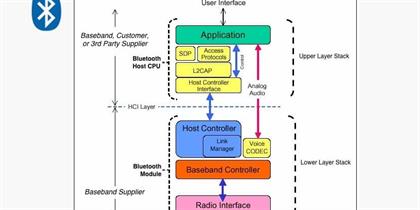
Unveiling the Mysteries of Bluetooth Channel Sounding
September 09, 2024

In the realm of wireless communication, Bluetooth technology has become an indispensable part of our daily lives, facilitating seamless connectivity between devices. However, the efficiency and reliability of Bluetooth communication are heavily influenced by the characteristics of the radio channel it operates in. Bluetooth Channel sounding is a technique that enables the assessment of these channel characteristics, which is crucial for optimizing performance and ensuring robust communication. This article delves into the intricacies of Bluetooth channel sounding, exploring its significance, methodologies, and applications in enhancing wireless connectivity.
The Importance of Channel Sounding
Bluetooth operates in the 2.4 GHz Industrial, Scientific, and Medical (ISM) band, which is a shared frequency spectrum. This shared nature makes the radio environment susceptible to interference from other devices, leading to fluctuations in signal quality. Channel sounding is the process of estimating the channel’s impulse response, which provides insights into the multipath propagation, attenuation, and delay spread. This information is vital for:
- Adaptive Modulation and Coding (AMC): Adjusting the modulation and coding schemes based on channel conditions to maximize data rate and minimize error rates.
- Beamforming: Steering the antenna beams towards the direction of the strongest signal paths to improve signal strength.
- Equalization: Compensating for signal distortions caused by the channel to recover the transmitted data accurately.
Methodologies in Bluetooth Channel Sounding
- Transmitter-Based Sounding: In this approach, the transmitter sends a known training sequence, which is then received and processed by the receiver to estimate the channel response. The challenge here is designing a training sequence that is robust against channel variations and interference.
- Receiver-Based Sounding: The receiver generates a sounding signal, which is transmitted back to the receiver after being affected by the channel. This method is less common in Bluetooth due to the need for a feedback link.
- Non-Orthogonal Sounding: This technique uses non-orthogonal sequences for sounding, which can provide more channel information but at the cost of increased complexity in signal processing.
- Sweep-Based Sounding: The transmitter sweeps through different frequencies within the Bluetooth band and measures the channel response at each frequency. This method is useful for identifying frequency-selective fading.
Applications of Channel Sounding in Bluetooth
- Quality of Service (QoS) Enhancement: By understanding the channel’s behavior, Bluetooth devices can dynamically adjust their transmission parameters to maintain a desired level of QoS.
- Energy Efficiency: Channel sounding can help in optimizing the transmit power, thus conserving energy and extending the battery life of Bluetooth devices.
- Interference Mitigation: By identifying the sources and characteristics of interference, Bluetooth systems can employ strategies to minimize its impact on communication.
- Network Planning and Optimization: Channel sounding data can be used to plan the deployment of Bluetooth devices in a network, ensuring optimal coverage and performance.
Challenges and Future Directions
Despite its benefits, Bluetooth channel sounding faces several challenges:
- Complexity: The process of channel estimation and the subsequent signal processing can be computationally intensive, especially for devices with limited processing capabilities.
- Latency: The time required for channel sounding can introduce latency, which is undesirable for real-time applications.
- Privacy Concerns: The transmission of training sequences or sounding signals could potentially reveal information about the devices and their usage patterns.
Future research in Bluetooth channel sounding may focus on developing low-complexity algorithms, reducing latency, and addressing privacy concerns. Additionally, the integration of machine learning techniques could enable more accurate and adaptive channel estimation, paving the way for even more efficient Bluetooth communication.
Conclusion
Bluetooth channel sounding is a pivotal technique in the ongoing evolution of wireless communication. It plays a critical role in enhancing the performance and reliability of Bluetooth devices by providing a deep understanding of the radio channel. As technology advances, the continued development and refinement of channel sounding methodologies will be essential in meeting the growing demands of wireless connectivity. With the potential for significant improvements in QoS, energy efficiency, and interference mitigation, the future of Bluetooth communication looks promising, with channel sounding at the heart of these advancements.
Leave a Reply
Related Products
You Might Like Also

In the realm of wireless communication, Bluetooth advertising has carved out a niche for itself, becoming an indispensable technology for short-range connectivity. At the heart of Bluetooth functionality lies the advertising process, which is the cornerstone for device discoverability and connection establishment. This article delves into the intri Read More

Bluetooth data structures are the foundational elements that govern how data is packaged, transmitted, and received within the Bluetooth ecosystem. These structures are designed to optimize the efficiency and reliability of wireless communication, ensuring that data is handled effectively across various devices and platforms. Read More

In the intricate world of wireless communication, Bluetooth Protocol Stack has established itself as a cornerstone technology, facilitating seamless connectivity between a plethora of devices. At the heart of this technology lies the Bluetooth protocol stack, a structured set of protocols that govern how devices communicate. One of the most critica Read More

In the intricate world of wireless communication, the Bluetooth Generic Access Profile (Bluetooth GAP) of Bluetooth technology stands as a cornerstone, enabling devices to connect, communicate, and collaborate seamlessly. This article delves into the essence of Bluetooth GAP, its role in establishing connections, and the myriad ways it enhances our Read More

The Data Transport Architecture in BLE is designed to accommodate the needs of low-power, low-data rate applications while maintaining high reliability. It operates on a connection-oriented basis, where devices establish a connection before data exchange commences. This architecture is composed of several key elements, including the Logical Link Co Read More

The Physical Layer is the foundation of any wireless communication protocol, including Bluetooth LE. It defines the basic parameters for the transmission of raw data bits over the air. In the context of BLE, the PHY is responsible for modulating the data onto a carrier signal, transmitting it through the antenna, and then demodulating the received Read More











